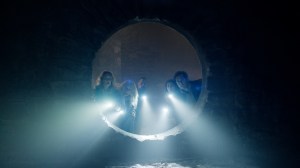The Webb Space Telescope breaks new ground with each passing day as scientists and astronomers pore over the data returned by the space observatory. As one group now suggests, the telescope may have already captured evidence of its first record supernova, or in layman’s terms, the death of a star.
Videos by ComicBook.com
“Primarily, it’s exciting because we have shown that we’re able to find and detect new transients with Webb, which was something that JWST is not designed to do,” Space Telescope Science Institute (STScI) astronomer Mike Engesser said in a recent interview with Inverse. “But it’s one of the things we’re showing we’re able to do in sort of an ad hoc way.”
Engesser and his team spotted an extraordinarily bright object within a galaxy some three million light years away from Earth. They monitored the galaxy, named SDSS.J141930.11+5251593, twice over five days apart and found it dimmed between their observations, a hallmark indication of an interstellar supernova.
“We would need more time series data to make a determination, but the data we do have does match that of a supernova, so it’s a very good candidate,” Engesser added. “So observing this now with Webb is actually really cool as a way to investigate the super late environment around big, bright supernovae like this. We’re getting new insights that we have not been able to get before.”
The earliest findings of the Webb Space Telescope have been applauded by researchers around the world, with NASA officials even admitting the observatory is performing better than anticipated.
“If we can detect new things, then that lets us do these sort of very fast-turnaround target of opportunity proposals, where we detect something and then we can say, ‘Okay, interrupt everything else. We want to observe this thing right now; this is time-sensitive,’” concluded Engesser. “Once we have a nice repertoire [of supernovae] built up, we can say, ‘Okay, it’s actually very worthwhile for us to have these time-sensitive observations of super high-redshift supernovae.”
Cover photo by Tobias Roetsch/Future Publishing via Getty Images








